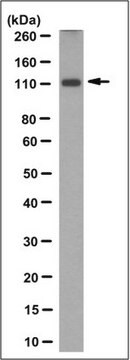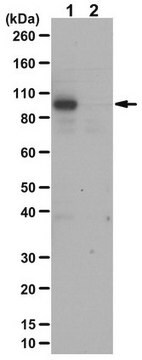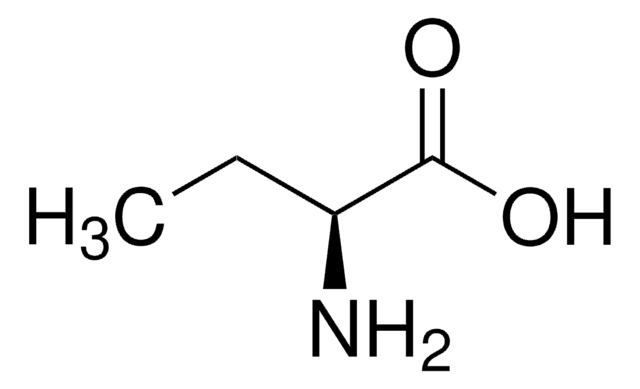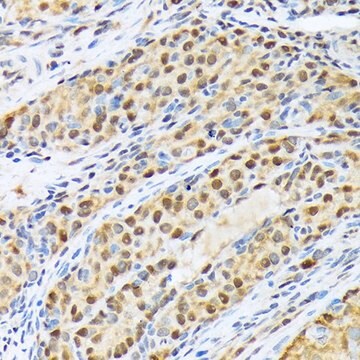ABE1424
Anti-Glucocorticoid Receptor Antibody
serum, from rabbit
Sinónimos:
Glucocorticoid Receptor, GR, Nuclear receptor subfamily 3 group C member 1
About This Item
Productos recomendados
origen biológico
rabbit
Nivel de calidad
forma del anticuerpo
serum
tipo de anticuerpo
primary antibodies
clon
polyclonal
reactividad de especies
human, mouse
reactividad de especies (predicha por homología)
nonhuman primates (based on 100% sequence homology), canine (based on 100% sequence homology), bovine (based on 100% sequence homology), feline (based on 100% sequence homology), horse (based on 100% sequence homology)
técnicas
affinity binding assay: suitable
western blot: suitable
Nº de acceso NCBI
Nº de acceso UniProt
Condiciones de envío
dry ice
modificación del objetivo postraduccional
unmodified
Información sobre el gen
human ... NR3C1(2908)
Descripción general
Especificidad
Inmunógeno
Aplicación
Epigenetics & Nuclear Function
Hormones & Receptors
Western Blotting Analysis: A representative lot detected both wild-type glucocorticoid receptor (GR) and the Dim4 DNA-binding mutant in lysates from U2OS cells that express the respective human GR constructs (Revollo, J.R., et al. (2013). Sci. Signal. 6(304):ra103).
Western Blotting Analysis: A representative lot detected both free glucocorticoid receptor (GR) and dexamethasone mesylate (Dex-Mes) labeled GR in HeLa S3 cell lysates (Cidlowski, J.A., et al. (1990). Mol. Endocrinol 4(10):1427-1437).
Affinity Binding Assay: A representative lot bound monomeric glucocorticoid receptor (GR) as well as oligomeric GR complexes in cytosolic preparations from dexamethasone-/Dex-treated HeLa S3 cells without affecting GR DNA-binding activity (Cidlowski, J.A., et al. (1990). Mol. Endocrinol 4(10):1427-1437).
Calidad
Western Blotting Analysis: A 1:5,000 dilution of this antibody detected glucocorticoid receptor in 10 µg of HeLa cell lysate.
Descripción de destino
Forma física
Almacenamiento y estabilidad
Handling Recommendations: Upon receipt and prior to removing the cap, centrifuge the vial and gently mix the solution. Aliquot into microcentrifuge tubes and store at -20°C. Avoid repeated freeze/thaw cycles, which may damage IgG and affect product performance.
Otras notas
Cláusula de descargo de responsabilidad
¿No encuentra el producto adecuado?
Pruebe nuestro Herramienta de selección de productos.
Código de clase de almacenamiento
12 - Non Combustible Liquids
Clase de riesgo para el agua (WGK)
WGK 1
Punto de inflamabilidad (°F)
Not applicable
Punto de inflamabilidad (°C)
Not applicable
Certificados de análisis (COA)
Busque Certificados de análisis (COA) introduciendo el número de lote del producto. Los números de lote se encuentran en la etiqueta del producto después de las palabras «Lot» o «Batch»
¿Ya tiene este producto?
Encuentre la documentación para los productos que ha comprado recientemente en la Biblioteca de documentos.
Nuestro equipo de científicos tiene experiencia en todas las áreas de investigación: Ciencias de la vida, Ciencia de los materiales, Síntesis química, Cromatografía, Analítica y muchas otras.
Póngase en contacto con el Servicio técnico








